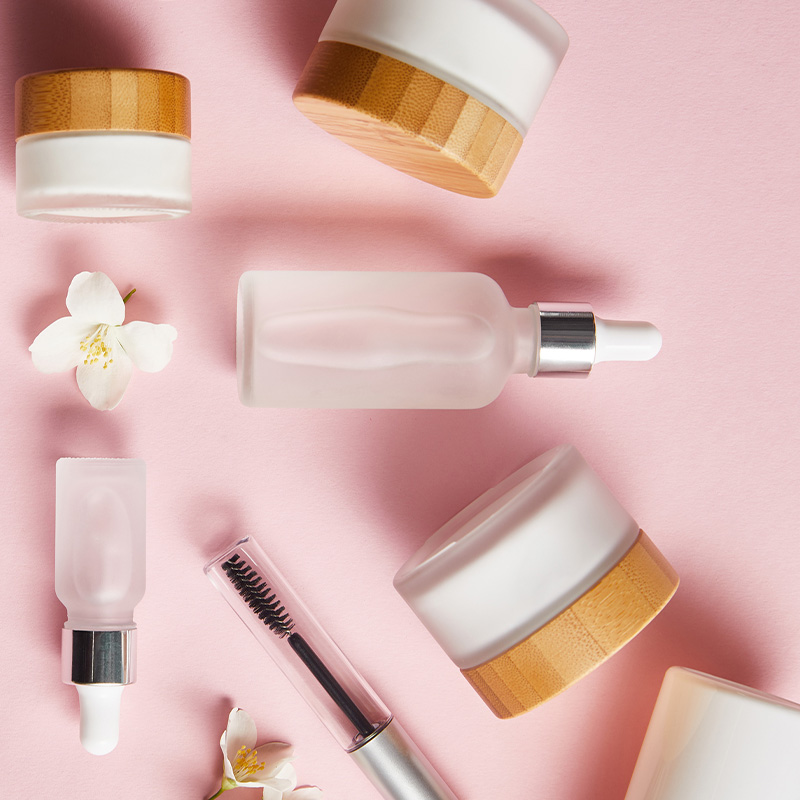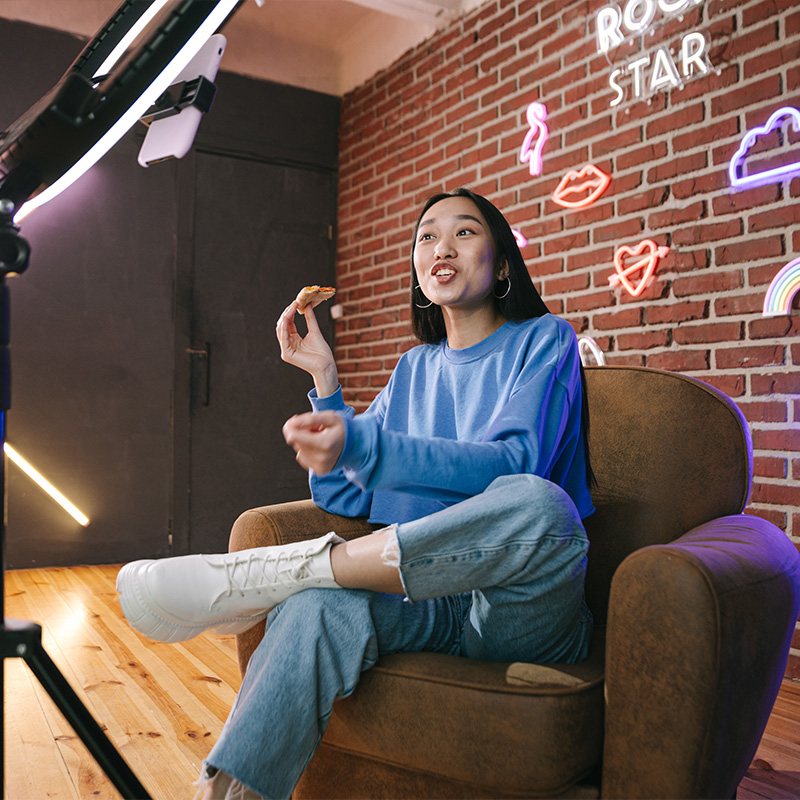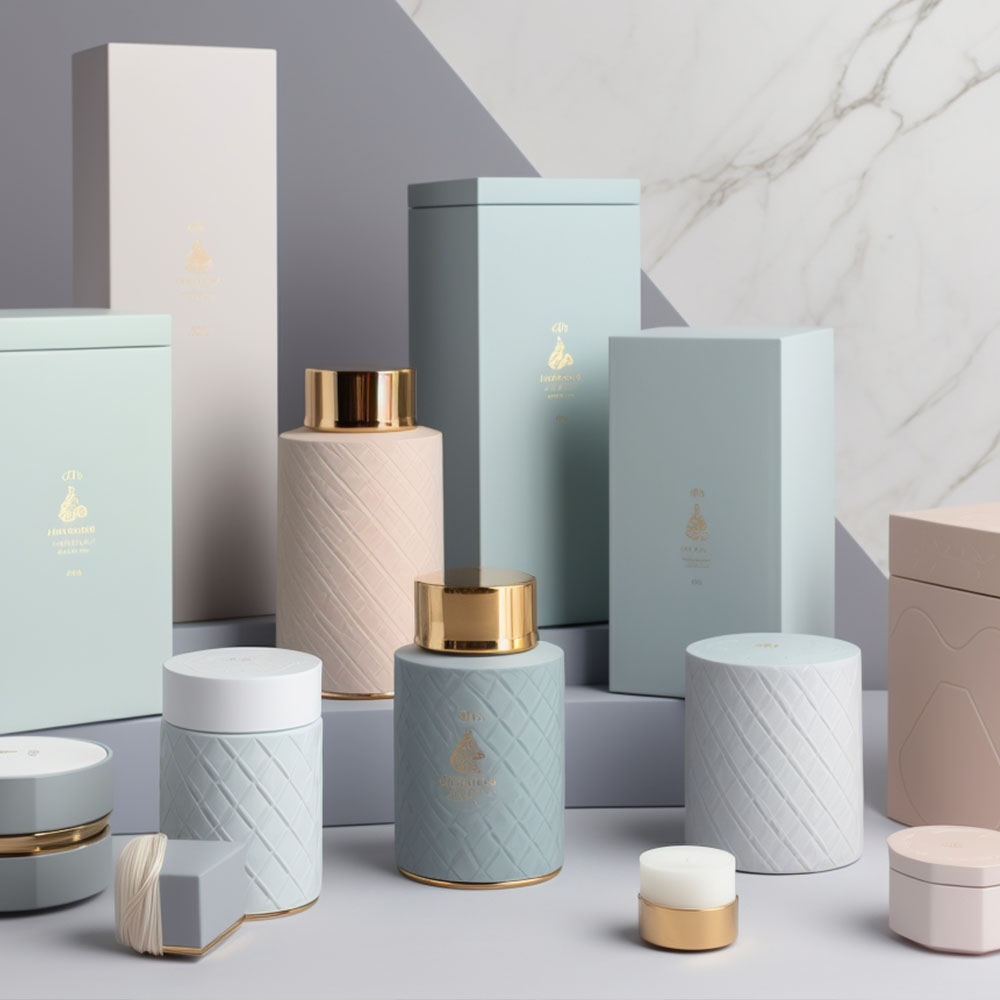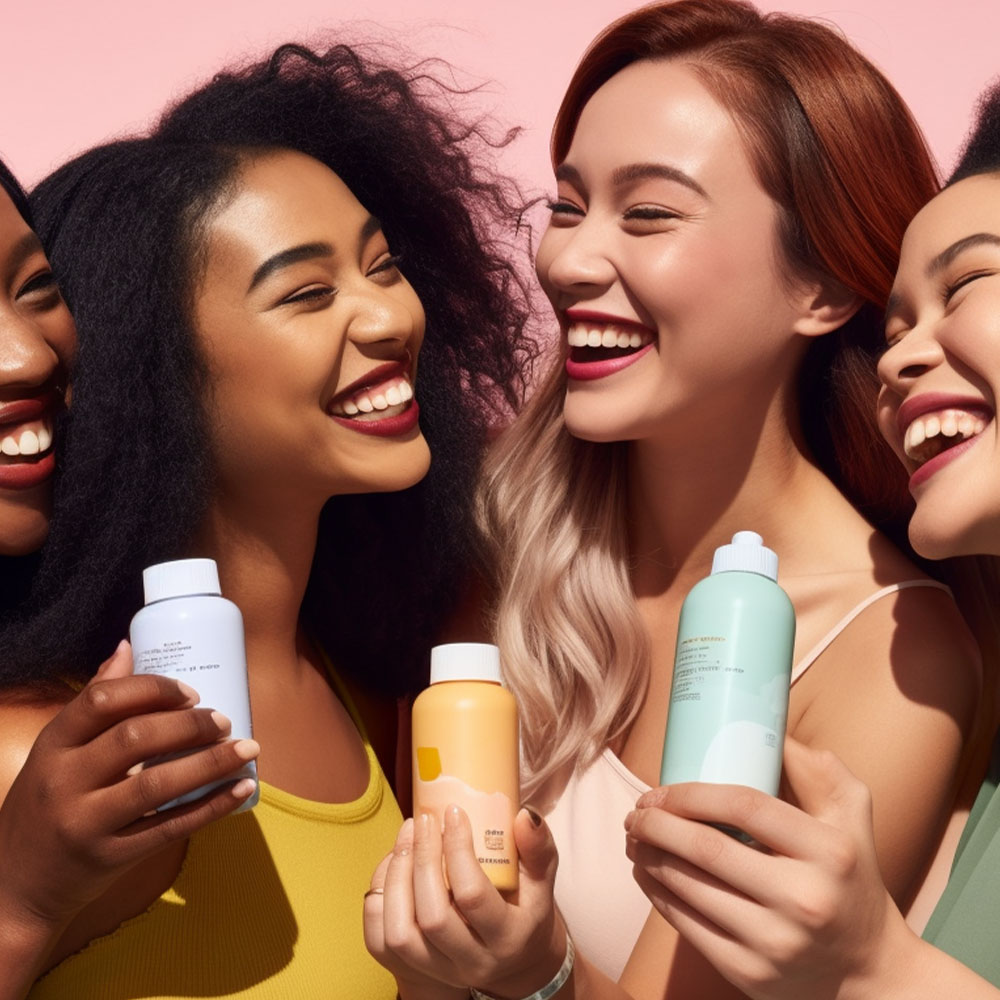
Are you a beauty brand looking to up your social media game? Look no further. In today’s world, brands must have an effective social media presence to reach and engage with their target audience. For the beauty industry, social media can be a potent tool for showcasing products and driving sales.
We’ve seen firsthand how impactful a solid digital strategy can be. However, with so many platforms available (Instagram, Facebook, TikTok – oh my!), it’s essential to understand each platform’s unique strengths and tailor your approach accordingly. From creating eye-catching visuals that stop users mid-scroll to leveraging influencer partnerships to expand your reach. This comprehensive guide covers everything you need to know about using social media advertising to drive growth for your beauty brand. So let’s dive in!
Understanding Your Target Audience
Understanding your target audience is crucial. Therefore, researching demographics and conducting market analysis are essential steps before launching any campaign. This information allows you to tailor your ads to specific age groups, genders, ethnicities, and other relevant factors.
By researching the preferences of your target audience, you’ll be able to create content that resonates with them on a deeper level. This will help build trust between your brand and customers since they feel understood by seeing themselves represented in your marketing campaigns. It’s also essential to stay up-to-date with current trends to keep your messaging fresh and exciting.
Regarding social media advertising for beauty brands, visuals are everything. Your ad needs to capture the attention of potential customers quickly while showcasing the unique features of your products or services. Understanding what appeals most visually to different demographic groups will enable you to make informed design choices that resonate with them.
Incorporating these strategies into your social media advertising efforts not only increases engagement but also boosts sales as well. By taking the time upfront to research and analyze your target audience thoroughly, you ensure that every advertisement you put out there speaks directly to those who matter most – resulting in loyal followers whose organic shares expand reach beyond expectations!
Choosing The Right Social Media Platforms
We help you identify the right target audiences for your beauty brand’s social media advertising. We’ll then compare the pros and cons of the major social media platforms to find the best fit for you. Let’s get started so you can start reaching your potential customers! We are confident that by the end of this guide, you’ll have a clear idea of which social media platforms will work best for your brand.
Identifying Target Audiences
Are you ready to transform your social media advertising game for your beauty brand? The first step in choosing the right platform is identifying your target audience. Without a clear understanding of who you are trying to reach, all efforts will be fruitless. Beauty brand target audiences vary greatly depending on age, gender, ethnicity, and interests. Therefore, conducting thorough social media audience research is crucial in pinpointing your ideal customers.
Start by analyzing data from demographic tools available on each social media platform. This will give you insight into user behavior and what types of users frequent each site. For example, if your product caters to a younger demographic, Instagram may be the way to go with its highly visual nature and popularity among millennials and Gen Zers. On the other hand, if targeting an older demographic interested in professional skincare or anti-aging products, Facebook may prove more effective due to its more significant percentage of middle-aged users.
Once you have identified potential platforms based on audience demographics, dive deeper into their behaviors and interests through analytics tools offered by social media sites or third-party software such as Hootsuite Insights or Sprout Social. Pay attention to what content performs well within specific groups – do they respond better to educational posts about skin health or lifestyle photos featuring beauty influencers? Understanding these nuances can help tailor content specifically for each group.
In conclusion, knowing your target audiences is essential when effectively utilizing social media advertising for your beauty brand. By conducting thorough research using demographic tools and analytics software, you can identify which platforms best suit your desired consumer base and create content designed specifically for them. With this knowledge, let’s elevate our advertising strategies beyond expectations!
Platform Comparisons
Now that we clearly understand our target audiences, the next step in choosing the right social media platforms is to compare them based on their unique features and benefits. For example, visual appeal plays a significant role in beauty brand advertising, making Instagram an obvious choice due to its highly visual nature. In addition, the platform’s photo and video-sharing options allow for creative expression and engagement with followers through visually appealing content.
However, targeting options are equally important for effective marketing strategies. Facebook offers more extensive targeting capabilities than any other platform as users provide more detailed personal information such as age, gender, location, interests, and behaviors. This makes Facebook ideal for reaching specific groups interested in professional skincare or anti-aging products.
Twitter may not be the first platform that comes to mind when considering beauty brand advertising; however, it can serve as a valuable tool for real-time conversations and customer service inquiries. Twitter allows brands to connect with consumers quickly and effectively by providing immediate answers to their questions or concerns.
Pinterest is another platform that should not be overlooked when considering social media advertising for your beauty brand. Its focus on inspiration through stunning visuals aligns perfectly with the industry’s aesthetic appeal. Pinterest also boasts high conversion rates as users search for ideas and products related to beauty trends.
In conclusion, each social media platform has unique features and benefits that make it suitable for different types of content and audience demographics. By comparing these platforms based on visual appeal and targeting options, you can determine which ones best suit your goals and create tailored content for those channels. So, let’s take advantage of these diverse opportunities available through various social media platforms!
Crafting Compelling Visuals
Picture this: a woman scrolling through her social media feed, stopping only when she comes across an image that catches her eye. What makes her stop? A striking visual with bold colors and unique graphic design techniques. As beauty brands, we have the power to create visuals that enhance our products and evoke emotions in potential customers.
One important aspect of crafting compelling visuals is understanding color psychology. Different colors elicit different emotions from viewers, so choosing the right hues for your brand and product is crucial. For example, blue tones convey trustworthiness and calmness, while reds suggest passion and energy. Using these colors strategically in your visuals can subconsciously influence how people perceive your brand.
Additionally, incorporating graphic design techniques such as symmetry, contrast, and negative space can make your visuals stand out even more. Symmetry creates balance and harmony in an image, while contrast adds depth and interest. Negative space allows for breathing room around your subject, making it easier for viewers to focus on what matters most – your product.
When creating visuals for social media advertising, remember that innovation is critical. Don’t be afraid to experiment with new ideas or take risks with unconventional designs. Your audience craves something fresh and exciting amidst the daily content. You’ll capture their attention and leave a lasting impression by staying ahead of the curve and pushing boundaries with your visuals.
Remember: crafting compelling visuals goes beyond just showcasing your products – it’s about telling a story that resonates with consumers on a deeper level. Utilize color psychology and graphic design techniques to create innovative images that speak volumes about who you are as a brand. Then, with every scroll-through social media feed filled with countless advertisements vying for attention, catch their eyes by showing them creativity at its finest!
Creating Engaging Copy
Writing for different platforms can be a challenge for beauty brands, so it’s essential to understand the nuances of each platform when crafting engaging copy. A call-to-action is critical to converting users, so use language that encourages users to take the desired action. Experiment with different copy variations to find out what resonates best with your target audience – A/B testing is a great way to do this. Finally, don’t be afraid to get creative and have fun with your copy – it’s the best way to ensure your message stands out!
Writing For Different Platforms
Are you looking to create shareable content for your beauty brand’s social media platforms? Writing copy that resonates with your audience can be tricky, but it’s not impossible. The key is to tailor your message according to the platform you’re using.
For instance, Instagram users respond well to visually stunning images paired with short and sweet captions. Make sure to use relevant hashtags to optimize your posts for search engines. On the other hand, Twitter requires brevity due to its character limit. So keep things snappy and witty while still getting your point across.
Facebook allows for longer-form content, so take advantage of this by telling a story or sharing an anecdote that ties back into your brand messaging. Use Facebook Insights to analyze which types of posts perform best among your followers and adjust accordingly.
Lastly, don’t forget about video content! YouTube and TikTok are great platforms for showcasing tutorials or product demos. Be creative and think outside the box – innovation sets successful brands apart from their competitors.
In conclusion, creating engaging copy for different social media platforms requires adaptability and creativity. By understanding the nuances of each platform and tailoring your message accordingly, you’ll be able to connect with your target audience on a deeper level while simultaneously optimizing your content for search engines.
Crafting An Effective Call-To-Action
So you’ve mastered tailoring your messages for different social media platforms. Now, it’s time to take things up and craft a compelling call-to-action (CTA) that will encourage your audience to take action.
To create urgency in your CTA, use emotive language that taps into your followers’ subconscious desire for innovation. For example, instead of saying, “Shop our new collection,” try something like, “Be the first to experience our game-changing products.” This not only creates a sense of exclusivity but also encourages immediate action.
Another tactic is to offer limited-time deals or promotions that are too good to resist. Use phrases such as “Act fast” or “Don’t miss out” to convey that time is running out. By creating this sense of urgency, you’ll be able to drive more traffic and sales while also keeping your audience engaged with your brand.
Lastly, make sure your CTA is clear and concise. For example, avoid using vague terms like “click here” or “learn more.” Instead, use specific verbs like “shop now,” “Subscribe,” or “book an appointment.” This makes it easier for users to understand what action to take next.
Crafting a compelling call-to-action can significantly improve engagement rates on social media platforms. By creating urgency through emotive language and offering irresistible deals and promotions, you’ll be able to inspire action from your target audience while still maintaining authenticity and creativity in your brand messaging.
A/B Testing Copy Variations
Now that we’ve covered crafting effective call-to-actions let’s move on to A/B testing copy variations. It is important to constantly measure the effectiveness of your content and make changes where necessary. This is where A/B testing comes in handy.
A/B testing involves creating two versions of the same ad or post with slight variations in the copy. Then, by comparing engagement rates between the two versions, you can determine which version performs better and implement those changes into future content.
For example, you could test different headlines or descriptions for a product launch post. One version may include emotive language, while the other focuses on specific features and benefits. You can see which version resonates more with your audience by measuring engagement rates such as likes, comments, shares, and click-throughs.
Implementing changes based on A/B testing results can significantly improve engagement and conversion rates. In addition, it allows you to cater to your audience’s preferences without sacrificing creativity or authenticity in your brand messaging.
In conclusion, A/B testing copy variations is essential to creating engaging copy for social media platforms. Measuring effectiveness through engagement rates and implementing changes helps ensure that your content resonates with your target audience while maintaining authenticity and creativity in your brand messaging.
Leveraging Influencer Partnerships
Now that we’ve discussed how to create engaging copy for social media advertising let’s dive into the power of leveraging influencer partnerships. Collaborating with influencers can help expand your brand’s reach and credibility in a way that traditional advertising cannot.
To start, it’s essential to identify which influencers align with your brand values and aesthetics. This means researching their content and engagement rates to ensure they have a faithful following that will resonate with your target audience. Then, once you’ve found the right fit, consider creative collaboration strategies such as sponsored posts or giveaways to showcase your products through their unique lens.
But how do you measure the impact of influencer partnerships? First, establishing clear goals beforehand is essential for increasing sales or driving brand awareness. From there, track key performance indicators (KPIs) such as impressions, engagement, and conversions to evaluate the effectiveness of each campaign.
Remember that building solid relationships with influencers takes time and effort. Be transparent about expectations and compensation while also showing appreciation for their contributions. With thoughtful planning and execution, collaborating with influencers can meaningfully elevate your beauty brand’s presence on social media.
By incorporating these tips into your social media strategy, you can effectively leverage influencer partnerships for increased visibility and success without sacrificing authenticity or creativity. Remember that measuring impact is crucial throughout the process – so stay focused on those KPIs!
Incorporating User-Generated Content
Incorporating User-Generated Content (UGC) is an effective strategy for social media advertising for beauty brands. UGC refers to content consumers create that features the brand’s products or services. By featuring this content on your social media platforms, you can show potential customers how real people use and enjoy your products.
One great way to start a UGC campaign is by creating a branded hashtag encouraging users to share their photos and experiences with your products. For example, if you’re promoting a new lipstick line, create a hashtag like #MyPerfectPout and ask followers to share pictures of themselves wearing one of the shades. Then, repost some of the best images on your page!
To measure the success of your UGC campaign, track engagement metrics such as likes, comments, and shares on posts using your branded hashtag. You can monitor user-generated reviews on third-party websites like Yelp or Google My Business. Remember that not all UGC will be positive – but even negative feedback provides valuable insights into areas where you may need to improve.
Incorporating User-Generated Content into your social media advertising strategy is wise for any beauty brand looking to engage with its audience authentically. With these tips, you can launch successful UGC campaigns that drive results and foster deeper connections with your customer base!
Utilizing Paid Advertising
Are you looking to take your beauty brand’s social media advertising strategy to the next level? If so, utilizing paid advertising could be a game-changer. According to recent studies, businesses that use Facebook ads have seen an increase in revenue by 50%. That alone should evoke excitement about what paid advertising can do for your business.
Before diving headfirst into paid advertising, it’s important to consider budget allocation. First, determine how much money you’re willing and able to spend on advertisements. Next, setting realistic goals and expectations based on your allocated budget is crucial. But don’t worry if you don’t have a large budget; are plenty of practical ways to utilize paid advertising without breaking the bank.
Ad targeting strategies play a significant role in the success of paid advertising campaigns. Social media platforms offer various options such as demographics, interests, behaviors, and more when choosing who sees your advertisement. Utilizing these targeting strategies will ensure that your ad is shown to those most likely interested in what you offer, resulting in increased engagement and conversions.
Incorporating paid advertising into your social media strategy has endless benefits for beauty brands looking to grow their online presence. With strategic budget allocation and targeted ad targeting strategies, businesses can see tremendous sales growth and customer acquisition results. So don’t miss out on this opportunity – start incorporating paid advertising into your social media strategy today!
Analyzing Your Results
Now that you have implemented your paid advertising strategy, analyzing the results is essential. Measuring ROI is crucial for understanding your campaigns’ effectiveness and identifying improvement areas. By analyzing data such as click-through rates, conversions, and engagement metrics, you can determine which ads are performing well and where adjustments need to be made.
One way to improve your strategy is by experimenting with different ad formats. For example, try incorporating video or carousel ads into your mix to see how they perform compared to static images. You may also want to adjust your targeting parameters based on the demographics of those who frequently engage with your ads.
Another critical factor in improving your social media advertising strategy is staying up-to-date on industry trends and best practices. As new features become available on platforms like Instagram and Facebook, it’s essential to experiment with them and see how they work within the context of your brand. Additionally, keeping an eye on what other beauty brands are doing can provide valuable insights and inspiration for future campaigns.
Overall, analyzing your results regularly and making necessary adjustments will help ensure that your paid advertising efforts effectively reach your target audience and drive business outcomes. With a commitment to measuring ROI and continuously improving strategies, beauty brands can stay ahead of the curve in this ever-evolving landscape of social media advertising.
Staying Up-To-Date With Trends
Did you know that 70% of beauty consumers are interested in trying new products? With this statistic in mind, beauty brands must stay up-to-date with the latest trends. Therefore, beauty trend forecasting should be a part of every social media advertising strategy. This allows brands to showcase their creative side and appeal to those who crave something fresh.
But how do you ensure your brand is ahead of the curve? Monitoring competitor strategies can give you insight into what’s working and what’s not. Take note of which campaigns gain traction and which fall flat. Additionally, keeping an eye on industry influencers can help guide your content creation. By staying informed, you’ll better understand what consumers want before they even know it themselves.
Another way to stay current is by attending trade shows and events specific to the beauty industry. These gatherings provide opportunities for networking and seeing firsthand what competitors are working on. Plus, learning about emerging technologies or techniques could inspire your next campaign.
Incorporating trendsetting ideas into your social media advertising plan doesn’t have to be overwhelming. It just requires dedication to research and a willingness to take risks. Remember, being ahead of the curve means taking chances and knowing when to pivot if necessary. Keep these tips in mind as you develop your next big idea!
Building A Strong Brand Identity
As the beauty industry evolves, staying up-to-date with trends is crucial for success in social media advertising. However, following these trends is not enough; brands must maintain a consistent and robust identity across all platforms.
One effective strategy to build a strong brand identity is collaborating with influencers. Partnering with influencers who align with your brand values and target audience can help increase visibility and credibility. However, it’sblishing clear guidelines and expectations for these collaborations is essential to ensure they are mutually beneficial and authentic.
In addition to influencer partnerships, consistent branding across all platforms is essential for building a recognizable and trustworthy brand. This includes using cohesive visuals, messaging, and tone of voice that aligns with your brand values. Maintaining consistency creates a sense of trust and reliability with your audience.
Beauty brands can effectively reach their target audience on social media platforms by staying up-to-date with trends while maintaining a solid brand identity through collaborations with influencers and consistent branding practices.
Conclusion
It is essential to understand the power of visual storytelling. Every post should be crafted with your target audience in mind and designed to showcase your brand’s unique personality and value proposition. Then, you can create a solid online presence that resonates with your followers with stunning visuals, engaging copy, and strategic partnerships.
Think about how you want your ideal customer to feel when they see your posts. Do you want them to feel confident, empowered, or inspired? By crafting content that taps into these emotions, you can connect your brand with your audience. So take the time to analyze what differentiates you from other beauty brands and use those insights to build an effective social media strategy that genuinely stands out.
Start building your brand with us today. Click here.









